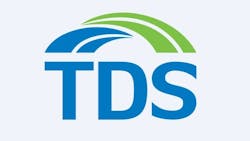TDS Telecom supports fiber program with latest asset sales
In the second quarter of 2024, TDS reported revenues of $1.24 billion, down 2.3% year-over-year. The company also announced two deals during the quarter: agreements to sell USCellular’s wireless operations to T-Mobile and TDS’s OneNeck IT Solutions operations to US Signal Company. Proceeds from the latter deal will reportedly support planned spending on TDS Telecom’s fiber program.
Vicki L. Villacrez, TDS executive vice president and CFO, said the quarter reflects the culmination of several initiatives that will position the company for future growth.
“I’m very pleased that both business units delivered double-digit year-over-year improvements in adjusted EBITDA, while making important investments in our networks in order to keep up with our customers’ needs for increasing usage and speeds,” she said.
Effective broadband strategies
Michelle Brukwicki, TDS Telecom senior vice president of finance and CFO, reported that the company’s broadband strategy delivered growth in the quarter. She reported a 4% increase in operating revenues, a 5% increase in residential broadband connections, a 5% increase in residential ARPU, and a 32% increase in adjusted EBITDA.
Brukwicki also reported that the company’s fiber footprint continues to grow. TDS expanded service addresses 10% year-over-year, adding 27,000 new marketable fiber addresses in the second quarter.
“We are making good progress towards our 2024 goal of 125,000 marketable fiber addresses,” she said.
TDS Telecom has an overall target of 1.2 million marketable fiber service addresses and ended the quarter with 854,000, which Brukwicki said reflects progress in expansion markets and fiber adds in incumbent markets. TDS is aiming to serve fiber to 60% of its total service addresses and ended the quarter with 49%.
Brukwicki also reported progress on adding wireless to the company’s fiber bundle. TDS announced its new wireless service, TDS Mobile, in the second quarter and plans to begin offering service later this year.
“We believe that adding mobile to our product portfolio will be complementary to our broadband offering, and it will enable us to offer a full suite of competitive products and services to our customers,” she said. “Initially, TDS Mobile will be offered exclusively for broadband customers in select areas, but over time, we plan to offer it in all of our markets: expansion, incumbent, and cable.”
Broadband add challenges
TDS reported 2,100 incumbent residential broadband net adds in the quarter, a 5% growth year-over-year. The company also reported 7,400 residential broadband net adds in expansion markets.
“While this is consistent with recent results, net adds did come in slower than our expectations this quarter,” she said. “We have plans in place aimed at ramping our broadband sales over the coming quarters, and we remain focused on achieving our penetration targets.”
Bruckwicki reported that two distinct events impacted net adds for the quarter: wildfires damaged customer homes, businesses, and plant equipment in the company’s Ruidoso, New Mexico market, accounting for approximately 1,000 broadband connection losses, and the ACP program ended during the quarter.
“Our team did a great job of getting these ACP customers on other broadband plans that met their needs,” she said. “Of our 19,000 ACP customers, only 2,400 chose to disconnect.”
Bruckwicki reported that average residential revenue per connection increased 5%, due primarily to price increases.
“With increases in broadband connections and revenue per user, we saw 7% growth in residential revenues,” she said. “Specifically, expansion markets delivered $28 million of residential revenues in the quarter compared to $18 million a year ago. As expected, commercial revenues decreased 6% in the quarter as we continue to decommission our competitive local exchange carrier (CLEC) markets.”
Bruckiwicki also reported an adjusted EBITDA growth of 32%, which she attributed to increasing fiber connections and revenues and decreasing cash expenses.
For related articles, visit the Business Topic Center.
For more information on high-speed transmission systems and suppliers, visit the Lightwave Buyer’s Guide.
To stay abreast of fiber network deployments, subscribe to Lightwave’s Service Providers and Datacom/Data Center newsletters.
About the Author

Hayden Beeson
Hayden Beeson is a writer and editor with over seven years of experience in a variety of industries. Prior to joining Lightwave and Broadband Technology Report, he was the associate editor of Architectural SSL and LEDs Magazine.

